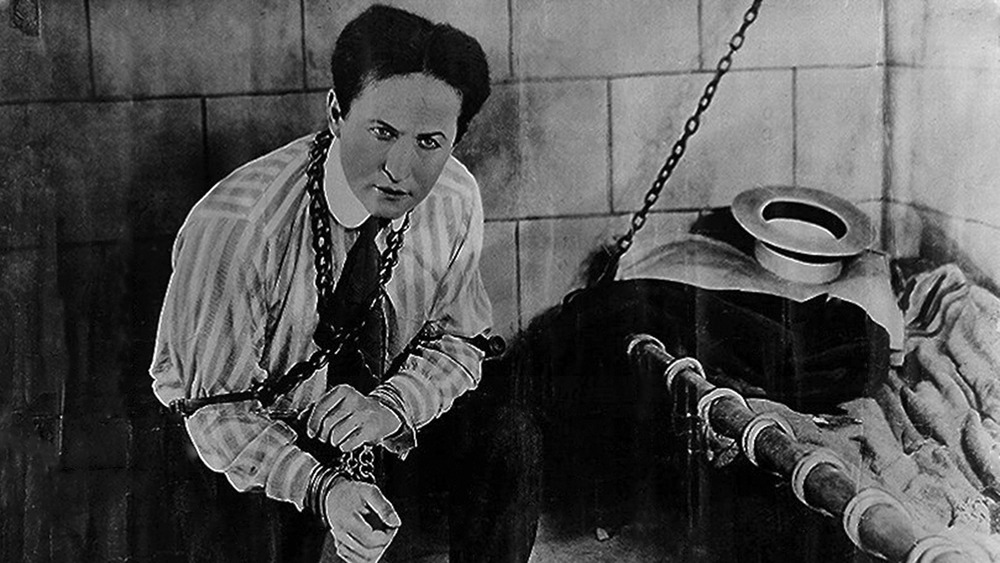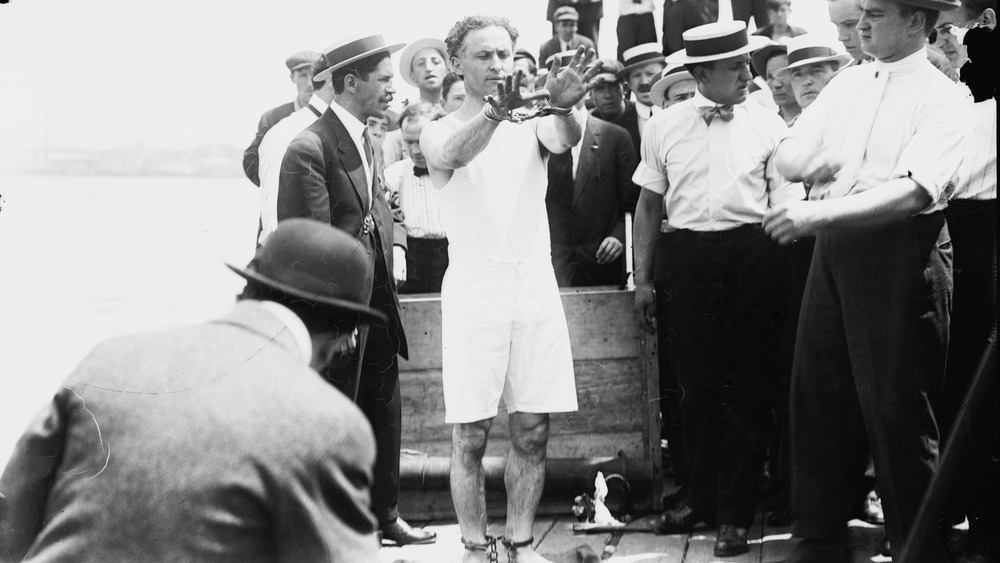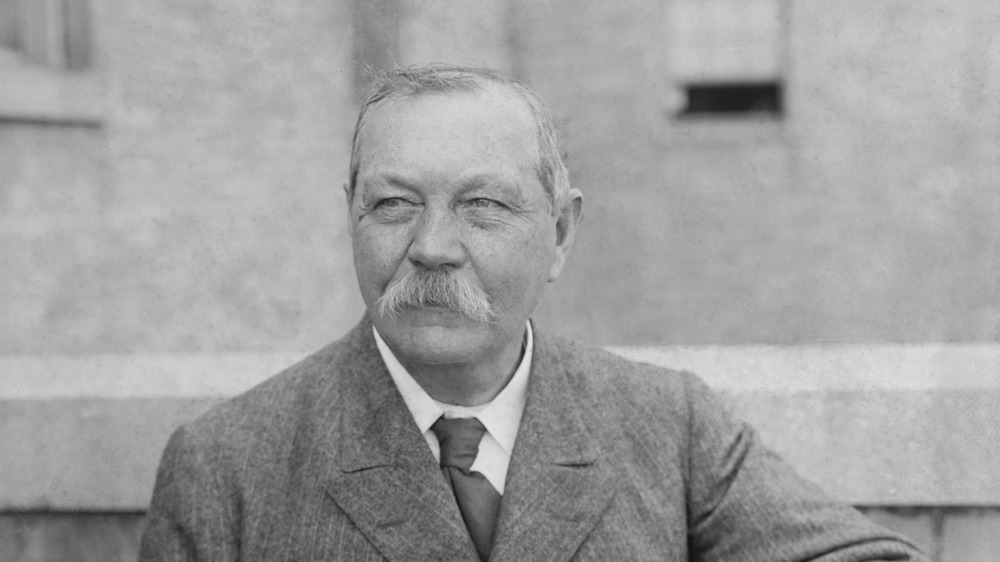The Weird Request Houdini Made For The Pillow In His Coffin
Harry Houdini was a master escape artist. According to Parcast, he shackled himself and escaped from the belly of an embalmed whale, a gigantic milk can, a packing crate sunk to the bottom of the East River, a jail cell in Murderer's Row, and a straightjacket suspended from a crane. The guy kinda had a thing for squeezing himself into various metaphors for his mother's womb. In fact, Harry Houdini was a pretty ardent mama's boy.
As Smithsonian magazine notes, the magician's friend and fellow illusionist Howard Thurston commented on Houdini's relationship with the woman who gave him life: "His love for his mother was his deepest devotion." His mother, Cecilia Weiss, died in 1913, and Houdini carried the shock of the loss all the way to his grave. Literally. His last will and testament stipulated that he be buried with his head lying on a pillow made of a stack of letters from his mother. Only one from his wife made it into the stack. Houdini was buried in a coffin he'd made for one of his magic tricks. According to a New York Times article published on Houdini in the Times, the airtight bronze coffin had been made for a trick in which he had aimed to prove "that anyone could live without air for an hour if they did not let fear overcome them."
Houdini tried to reach his mother via spiritualism
In the aftermath of the loss of his mother, Houdini turned to a new religious fad that was taking over the world at the turn of the century. Spiritualism claimed to be able to put people in contact with the spirits of people who had died. Tons of famous people that we consider intelligent from that period, from writers to journalists to inventors to Nobel Prize winners, got wrapped up in the religion, which was riddled with charlatans. Scientists William Crookes, Sir Oliver George, and Alfred Russel Wallace; writers Charles Dickens and Sir Arthur Conan Doyle; even inventor Thomas Edison, who, according to Tech Times, had an idea for a "spirit phone" — all got pulled into the bogus claims of the spiritualists.
After trying for a while to talk to his dead mother and getting no response, Houdini became disillusioned with spiritualism and went on to devote himself to debunking the claims of mediums who charged people for séances in which they supposedly communicated with the dead. According to American Experience, he once told the L.A. Times, "It takes a flimflammer to catch a flimflammer." His most famous debunking was that of Mina "Margery" Crandon, who was up for a big prize from Scientific American magazine if she could show proof of "conclusive psychic manifestations." His investigations ended up causing the magazine to decide against giving her the prize.
Houdini's spiritualist connection to Sir Arthur Conan Doyle
Harry Houdini and Sir Arthur Conan Doyle, author of the beloved Sherlock Holmes mysteries, met in 1920. While it kind of made sense that Houdini would be drawn to the supernatural fad (according to The Guardian, some people actually thought he himself was paranormally gifted), the creator of the most famously rational fictional character in literary history is somewhat of a surprising acolyte of such hogwash. Doyle had gotten into spiritualism after losing his son in World War I. But while spiritualism brought the two together, it would ultimately tear them apart in the end.
Houdini had pulled enough visual tricks on people to fall for the antics of the various mediums that he ended up calling "human leeches." (Margery Crandon had some rather sensational ways to pull people into her ruse at her seances, such as wearing seductive clothing and having ectoplasm issue from her vagina.) After Doyle's wife Jean made a spiritualist attempt to contact Houdini's mom, the friendship between the two historical figures began to deteriorate. While Jean tried to convince him of the contact via a séance trick called "automatic writing," she didn't account for the fact that she was a proper British lady and Houdini's mom was a Hungarian immigrant to the United States. The letter came out in grammatically correct king's English, and, as Houdini announced publicly after the séance, his mother's English had been atrocious.


